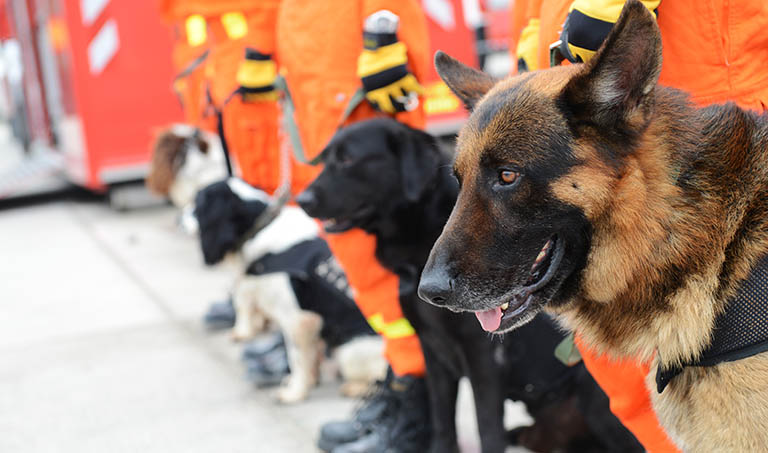From the earliest days of civilization to the modern era, dogs have stood by our side, offering unwavering loyalty and assistance in a variety of roles. Among these roles, working dogs stand out for their dedication, natural abilities and specialized skills, playing a key part in society. In this blog, we discuss the diverse world of working dogs, learning their evolution and history, understanding their jobs and responsibilities, offering guidance on appropriate behavior around them and celebrating the profound impact they have on our lives and communities.
Definition and Purpose of Working Dogs
Working dogs encompass a diverse group of canine companions trained to perform various tasks and jobs alongside humans. Their purpose extends to fields such as law enforcement, assisting individuals with disabilities, search and rescue, therapy and agriculture. The primary function of working dogs lies in their ability to fulfill specific tasks, leveraging their innate instincts and specialized training.
They demonstrate exceptional intelligence, loyalty and dedication in their duties. In essence, the importance of working dogs extends far beyond their natural abilities and specialized training; it lies in the profound impact they have on the lives of individuals and society as a whole.
Evolution & History of Working Dogs
The evolution of working dog breeds is attributed to the selective breeding practices to bring out certain traits more strongly in order to create animals that could do certain jobs exceptionally well. Humans selectively bred dogs for specific traits suited to their needs. Whether it was the strength, endurance, agility or intelligence, breed development was driven by practical considerations and environmental factors.
Dogs were among the first animals to be domesticated, prized for their acute hearing and sharp instincts. In hunter-gatherer societies, they served as invaluable allies during hunting expeditions and acted as guardians of homes and livestock. As societies evolved, so did the roles of dogs. They become integral to agricultural practices, aiding in herding livestock, guarding crops and transporting goods. In urban settings, canines served as companions to humans and protectors of households. Certain breeds, like terriers, were used for pest control and vermin hunting. Notably, guide dogs for the blind were first utilized in a Paris hospital in the 1750s. With the advent of the industrial revolution, working dogs found employment in factories, mines, search and rescue missions and law enforcement. Today, working dog breeds continue to adapt to meet the evolving needs of society.
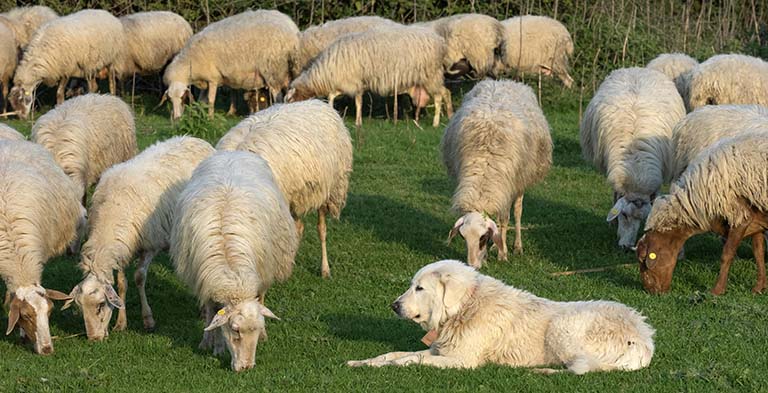
Types of Working Dogs
Service Dogs
Guide dogs: Seeing-eye dogs, commonly known as guide dogs, assist visually impaired or blind individuals in navigating obstacles and crowded areas. Equipped with specialized harnesses featuring handles, these dogs enable their handler to traverse unfamiliar spaces safely. Through mobility training, handlers learn to communicate effectively with their guide dogs using verbal commands and hand signals, fostering a seamless partnership for enhanced independence and mobility.
Hearing Dogs: Individuals who are deaf or hearing impaired find significant assistance from hearing dogs. These service animals undergo training to recognize and alert their handlers to various sounds, including doorbells, alarms, crying babies and phone alerts. Upon hearing a noise, the dog touches their human companion and leads them to the source of the sound. Additionally, hearing dogs are trained to alert their handlers to external noises like sirens or someone calling their name.
Mobility Assistance Dogs: Mobility assistance dogs cater to individuals with various conditions such as brain injuries, cerebral palsy, multiple sclerosis and more. These dogs offer invaluable support by fetching objects, pressing buttons on automatic doors, operating lights and facilitating the opening and closing of doors. They also assist in pulling wheelchairs up ramps and can serve as a stabilizing brace for individuals with balance difficulties. Trained to recognize situations where human assistance is required, mobility assistance dogs provide essential aid and peace of mind to their handlers.
Medical Alert Dogs: Medical alert dogs can undergo training to remind individuals to check their oxygen levels, monitor shortness of breath or keep track of medication levels. These dogs are capable of retrieving medications, seeking assistance when needed, waking up individuals experiencing respiratory difficulties and alerting others to a medical emergency in progress. For example, in cases of diabetes, these dogs alert individuals when their blood sugar levels drop too low. Similarly, for people prone to unpredictable seizures, these dogs intervene by breaking their falls to prevent head injuries. A medical alert dog’s specialized training equips them to provide invaluable support and assistance during various medical situations, enhancing the safety and well-being of their handlers.
To learn more about service dogs read here.
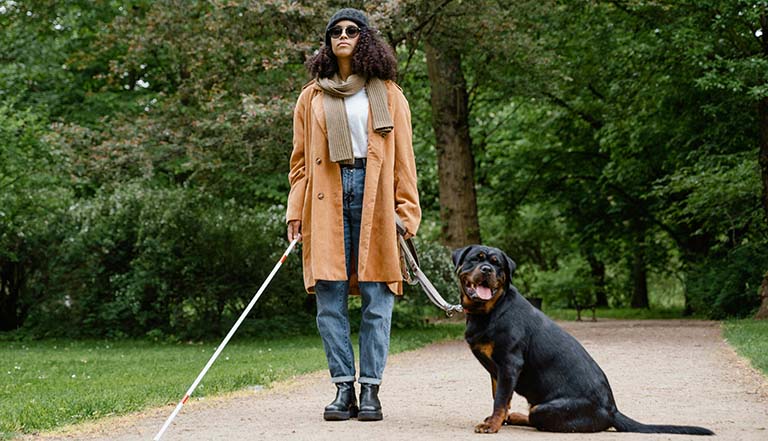
Therapy Dogs
Unlike service dogs, which are specially trained to assist individuals with disabilities, therapy dogs offer emotional support and companionship to people in various settings. These include cuddling with patients in hospitals or residents in nursing homes, listening to children read in schools, and offering solace to survivors in disaster areas. Their presence alone can uplift spirits and reduce stress. Their goal is to provide a sense of calm amidst chaos. Therapy dogs receive rigorous training to ensure they can navigate different environments and interact with diverse situations. Typical breeds that are trained to be therapy dogs are golden retrievers, standard poodles and Labrador retrievers.
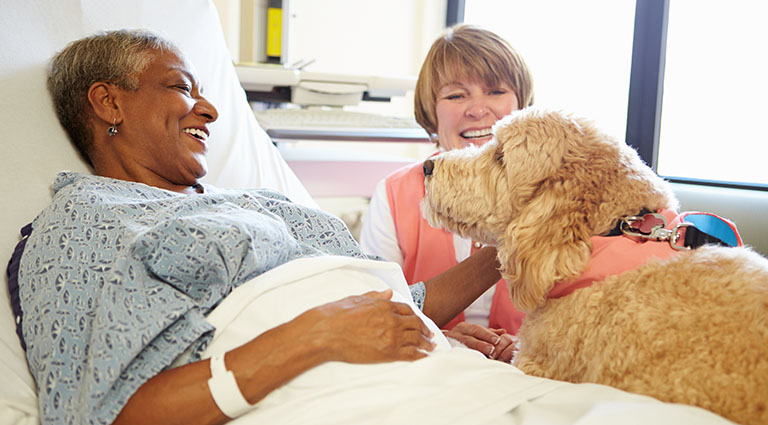
Search and Rescue Dogs
Dogs who participate in search and rescue, like Saint Bernards and Leonbergers, play a pivotal role in locating missing persons. These canines are trained to hone their natural hearing and scent-tracking abilities to develop skills essential for navigating treacherous terrain and challenging conditions. From urban environments to wilderness settings, search and rescue dogs participate in tracking, specialized searches, avalanche rescues and cadaver location.
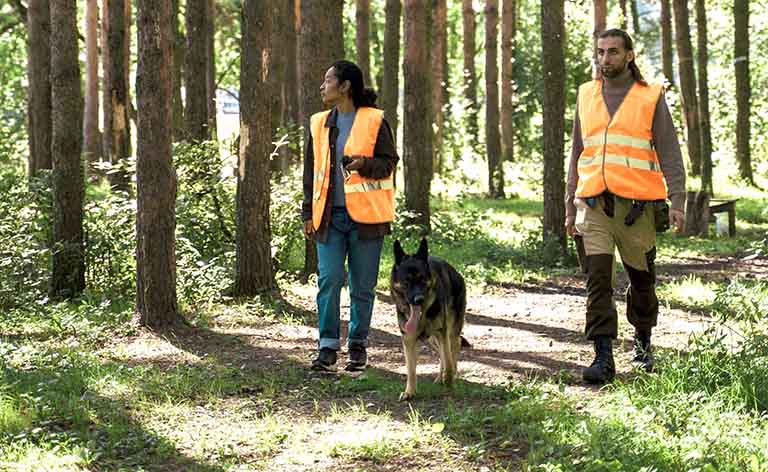
Police and Military Dogs
In the domains of law enforcement and military operations, police and military dogs play a vital part in upholding safety and national security. These highly trained canines are important partners in detecting narcotics, explosives and other threats with great accuracy. In police forces, they track suspects and aid in search and rescue operations.
Military working dogs are used during patrols, bomb detections and in apprehending enemy combatants on the battlefield. In the past, they were also used as messengers between battalions. Handlers and their dogs form tight-knit units to build trust and loyalty that is essential in high-stress and dangerous situations. Breeds commonly used in police and military work are German shepherds, Belgian malinois, beagles and Labrador retrievers.
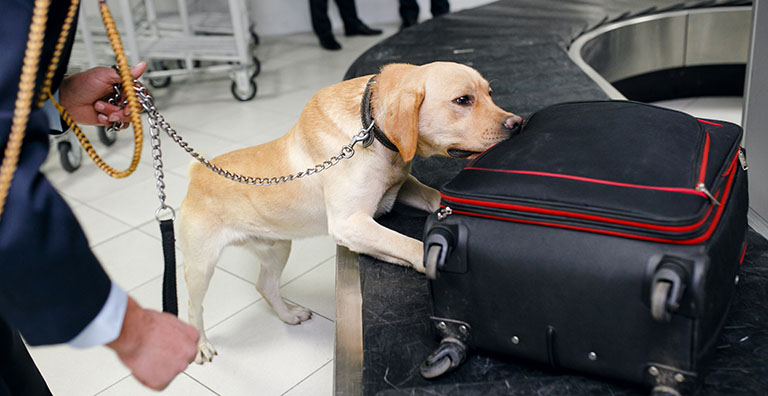
Herding Dogs
Bred for generations, breeds like border collies and Australian shepherds demonstrate the intelligence and instinct needed in managing livestock with precision and skill. With gentle yet firm commands, these dogs guide sheep and cattle, anticipating movements and reacting swiftly to any changes. Training for this job begins at the age of five or six months. The dog begins with learning simple commands and once those are mastered they are introduced to the livestock. Beyond their herding duties, they offer companionship to farmers working long days by themselves.
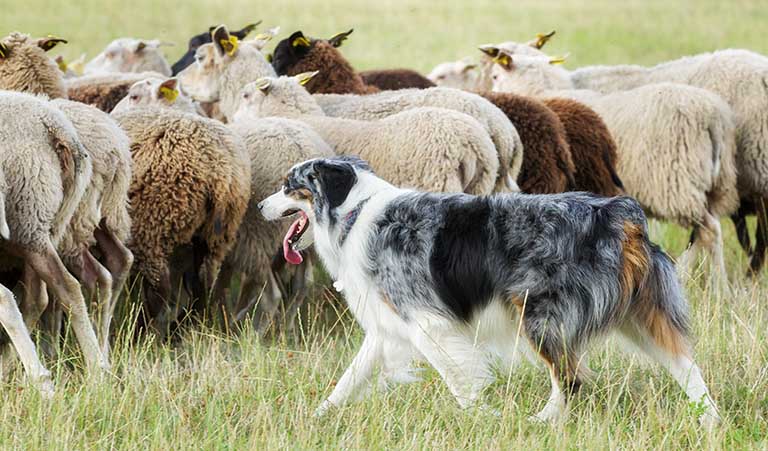
Sled Dogs
Originating from ancient Arctic cultures, sled dogs such as the Siberian husky and Alaskan malamute served as indispensable companions to indigenous peoples, traversing vast expanses of snow and ice with agility and speed. A well-trained team of 6-8 dogs can pull a sled and its driver at speeds exceeding 20 miles per hour. Guided by their mushers, these dogs pull sleds laden with supplies and provisions. Teams typically consist of 4-10 dogs, though some races require 18 or more.
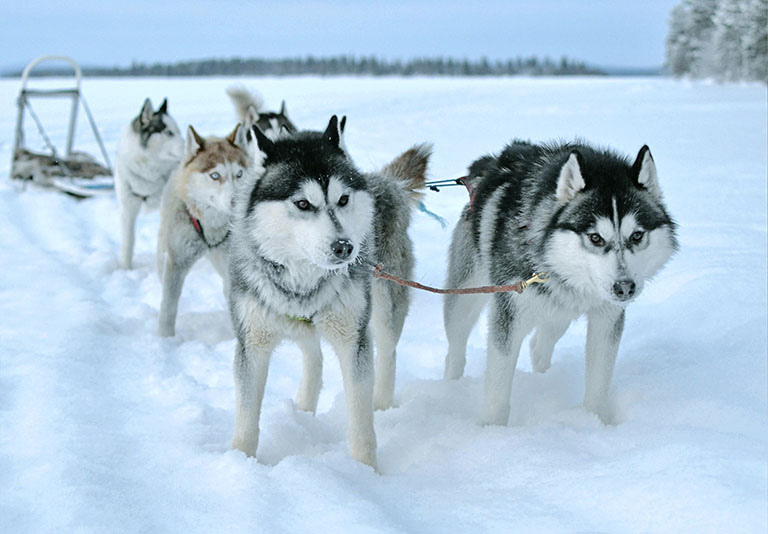
Hunting Dogs
Hunting dogs, spanning various breeds like pointers, setters, retrievers and scent hounds, are great partners in the hunt. They have specialized skills such as scent tracking, detecting and retrieving that have been honed through centuries. Hunting dogs use these natural and trained abilities to outwit elusive prey and track or retrieve over different types of terrain including water.
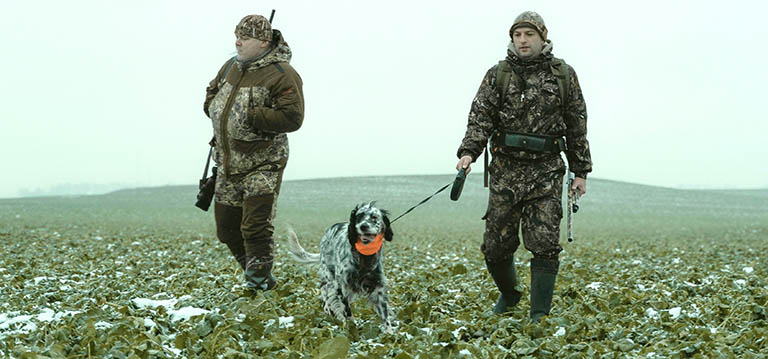
What to do When You See a Working Dog in Public
Working dogs are professionals with a job to fulfill. Whether they are service dogs providing vital assistance to individuals with disabilities, police dogs aiding in law enforcement efforts, hunting dogs tracking down game or therapy dogs there to focus on those who need their comfort, each serves a critical function that demands focus and discipline. It is advisable to not interfere with their work.
You can spot a working dog by their behavioral traits, such as remaining consistently alert to their handler, displaying discipline, clear training and maintaining a stable, even temperament. It’s important to respect their dedication to their duties and provide them with the space needed to perform without unnecessary distractions. Always ask before attempting to interact with a dog you suspect may be on the job. Some handlers may permit a quick pat on the hand, while others prefer that their dog remains fully focused on the task at hand.
Working Dogs Enjoy Having a Purpose
Despite common misconceptions, working dogs are far from miserable. In fact, they thrive on having a clear purpose. Working dogs are bred and trained to excel in their tasks, and their innate drive and eagerness to please make them happiest when they’re fulfilling their duties. Many dogs, regardless of their working status, exhibit behaviors rooted in their breed’s history due to centuries of selective breeding. For example, herding breeds may instinctively try to herd their owners, while hunting breeds may display a strong inclination to chase and retrieve objects. Having a job that allows them to naturally express their instincts brings a strong sense of contentment and purpose to the dog.
Paws for Purpose
Working dogs, from their historical significance to their modern-day roles, have always joyfully embraced their purpose and shown their devotion in helping mankind. As we honor their contributions, remember to remain mindful of their needs and respect their indispensable roles in society. Whether they are a service dog, police dog, therapy dog, sled dog or hunting dog, it is best to respect their duties and allow them to work uninterrupted.


